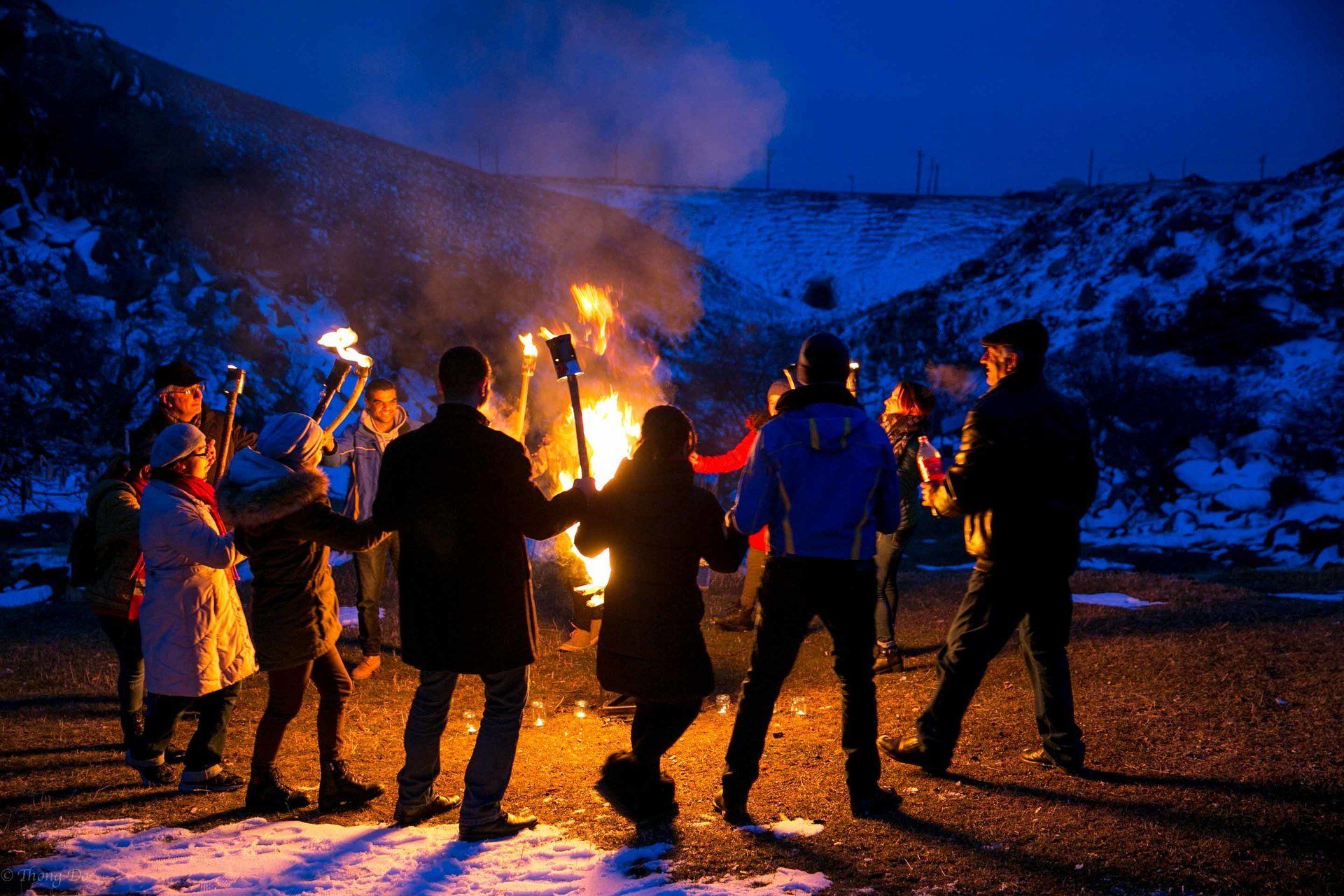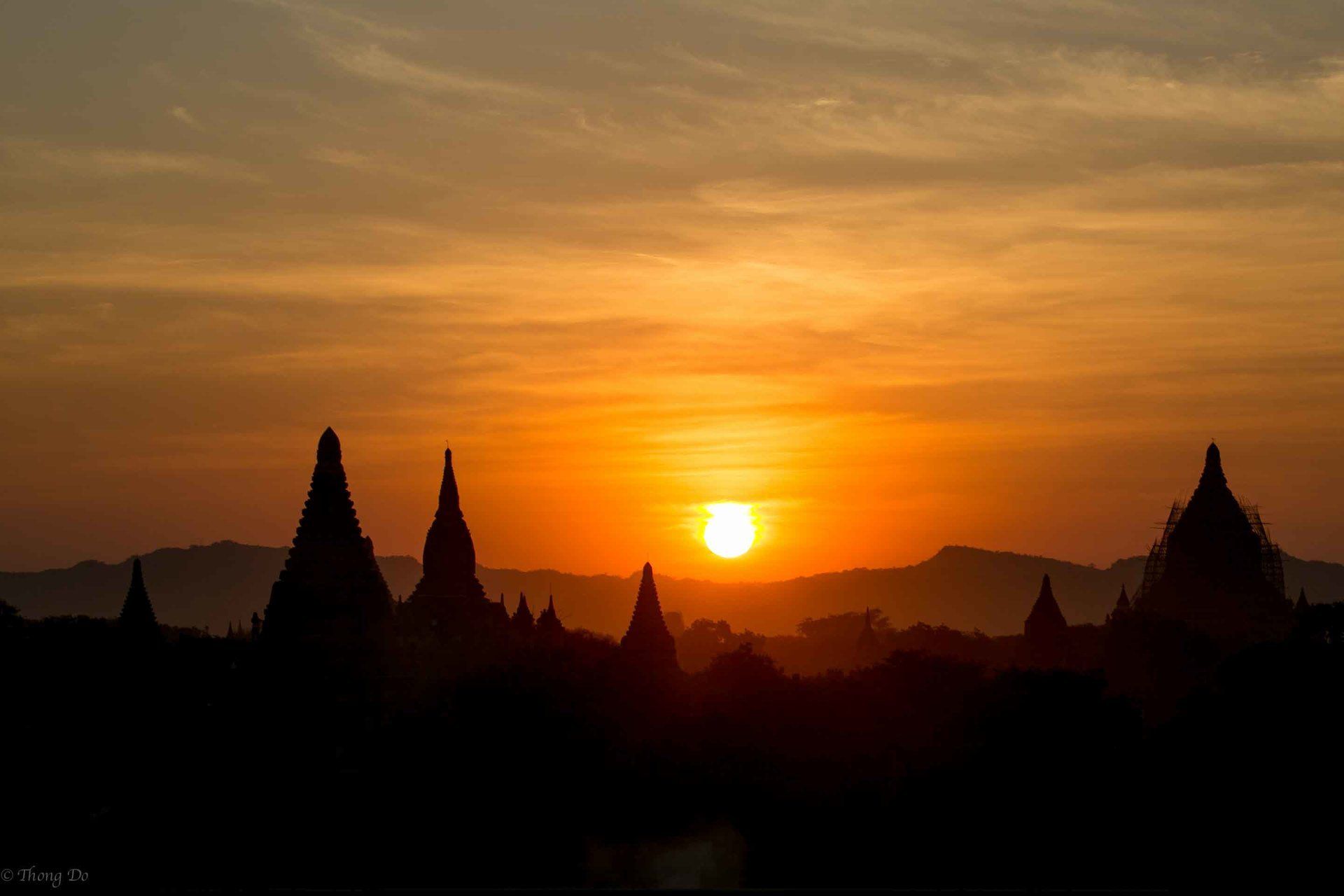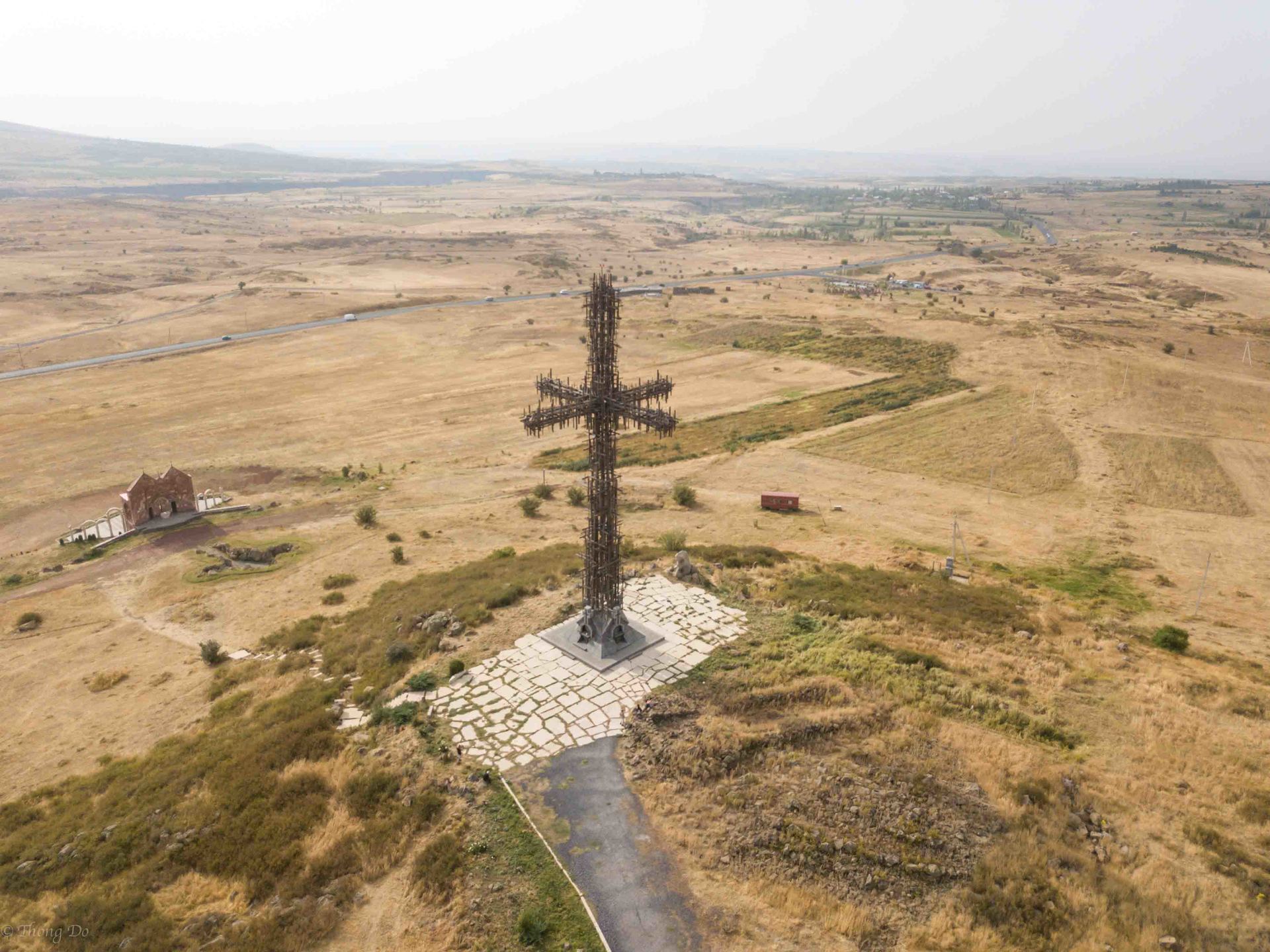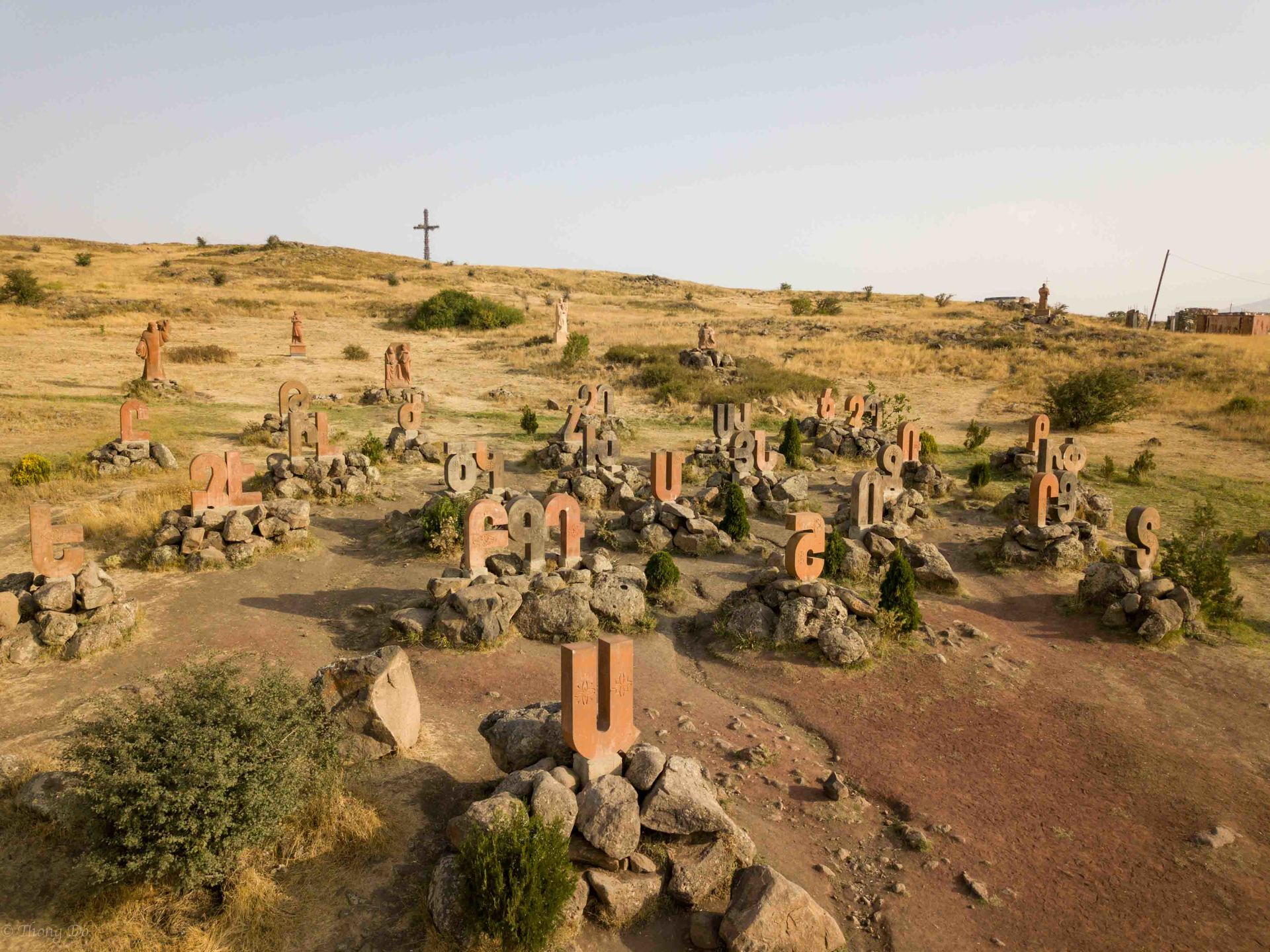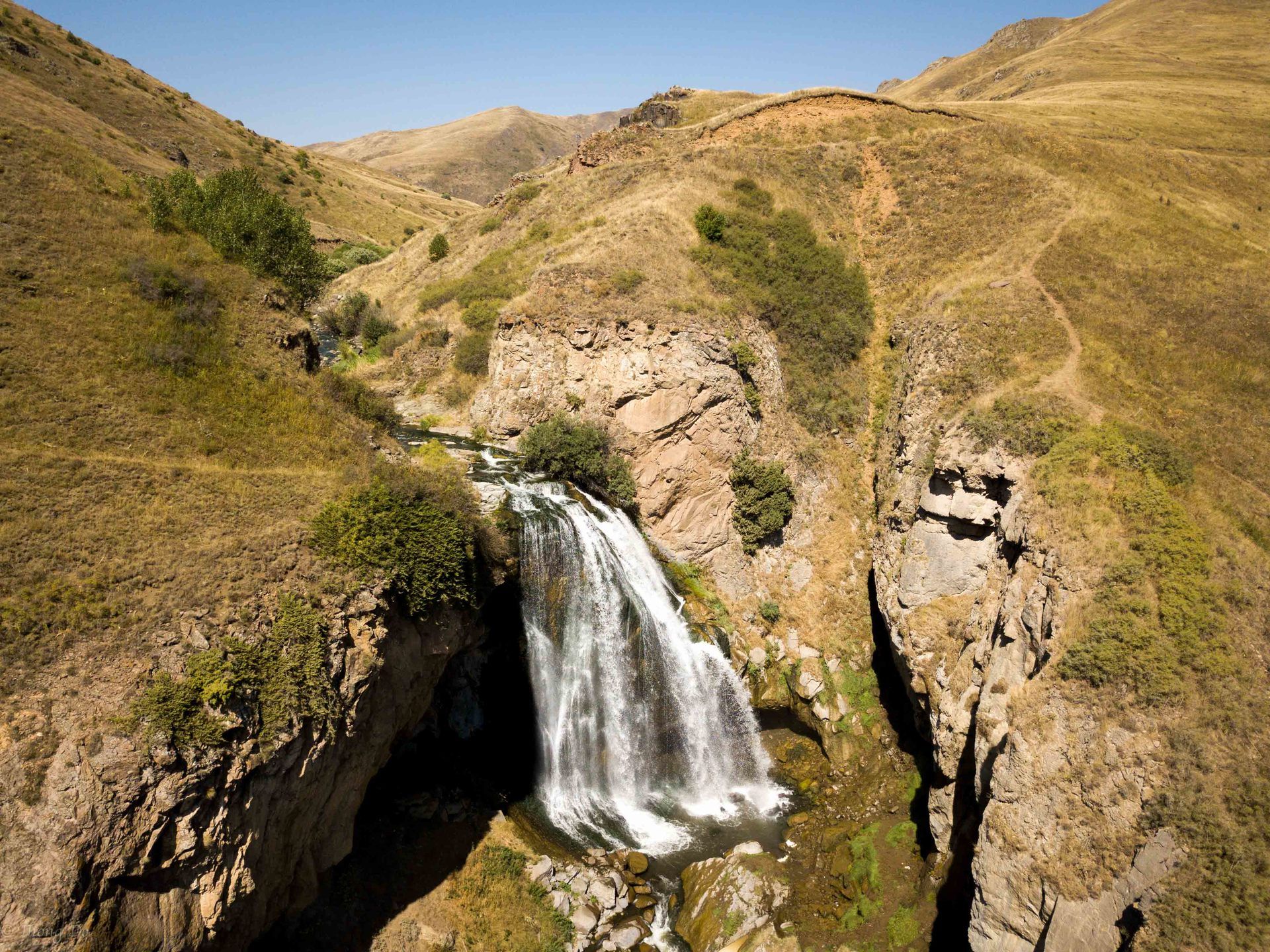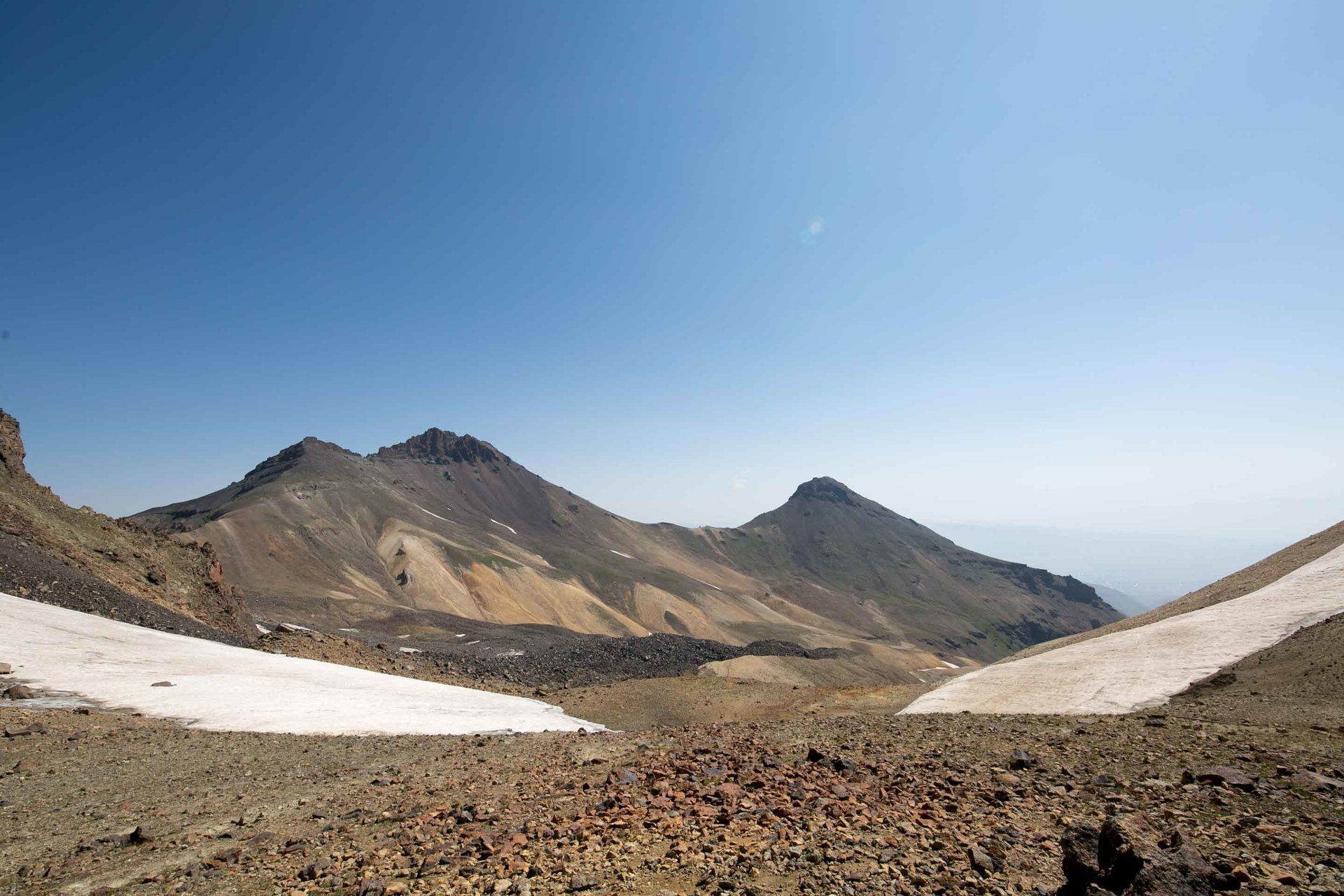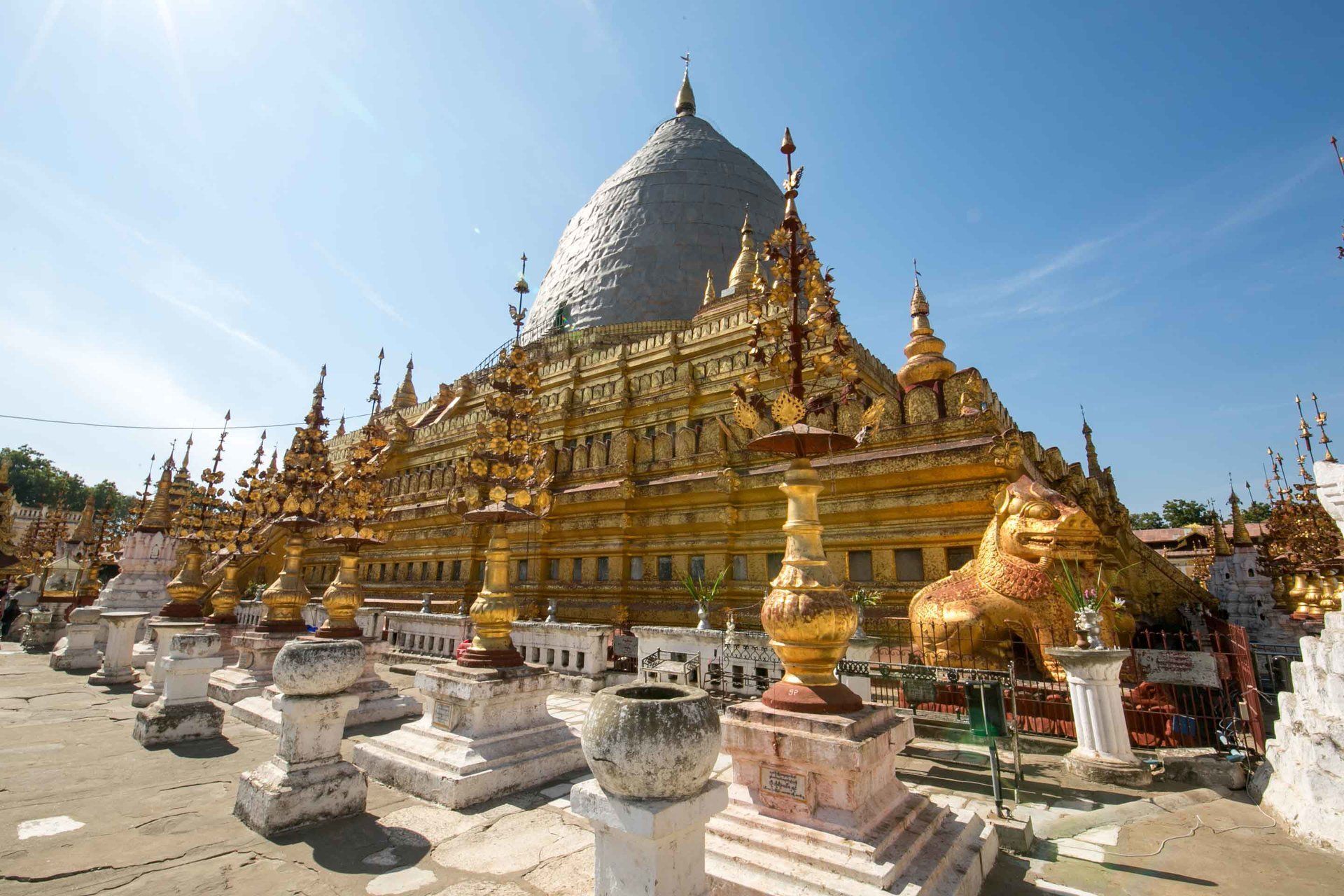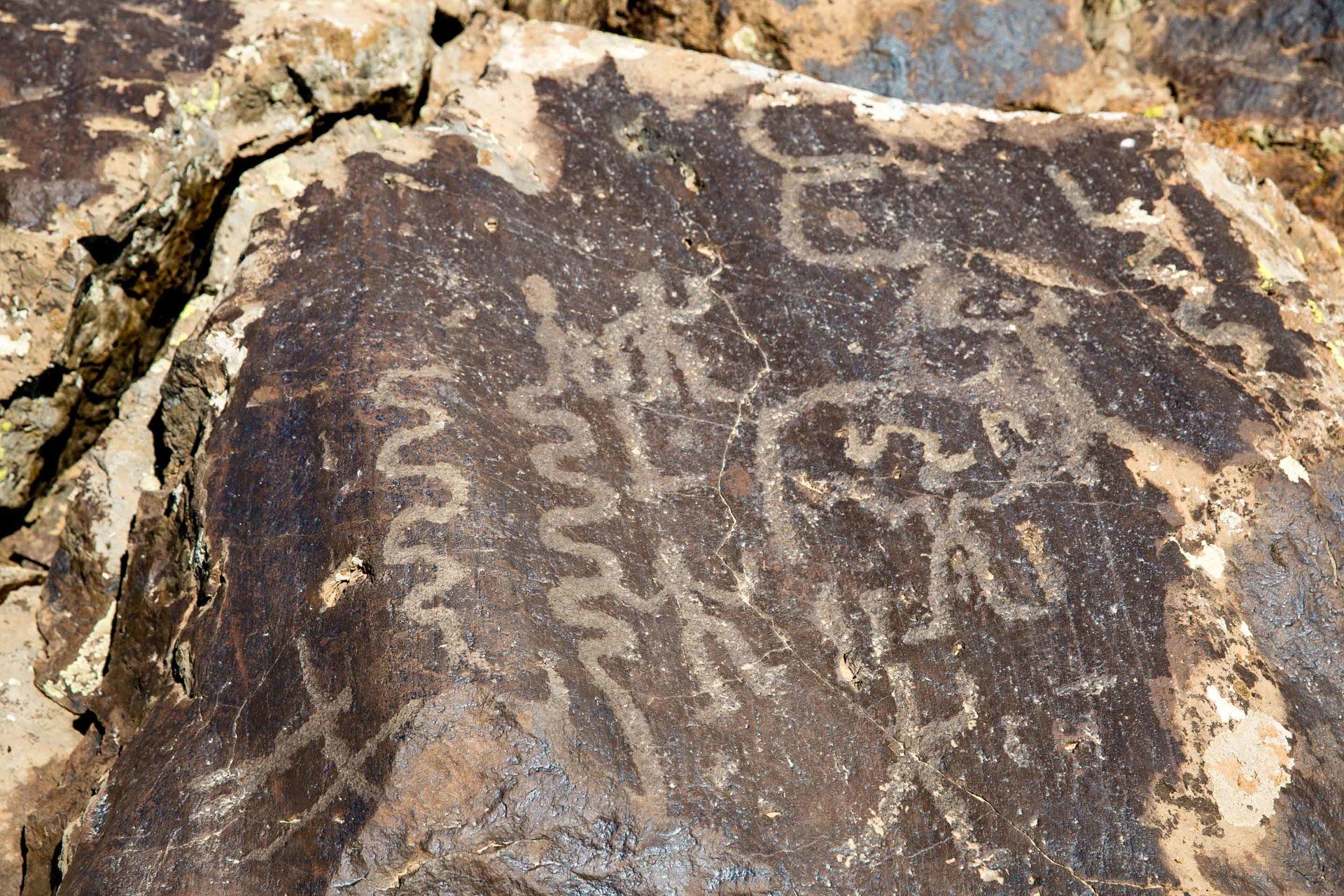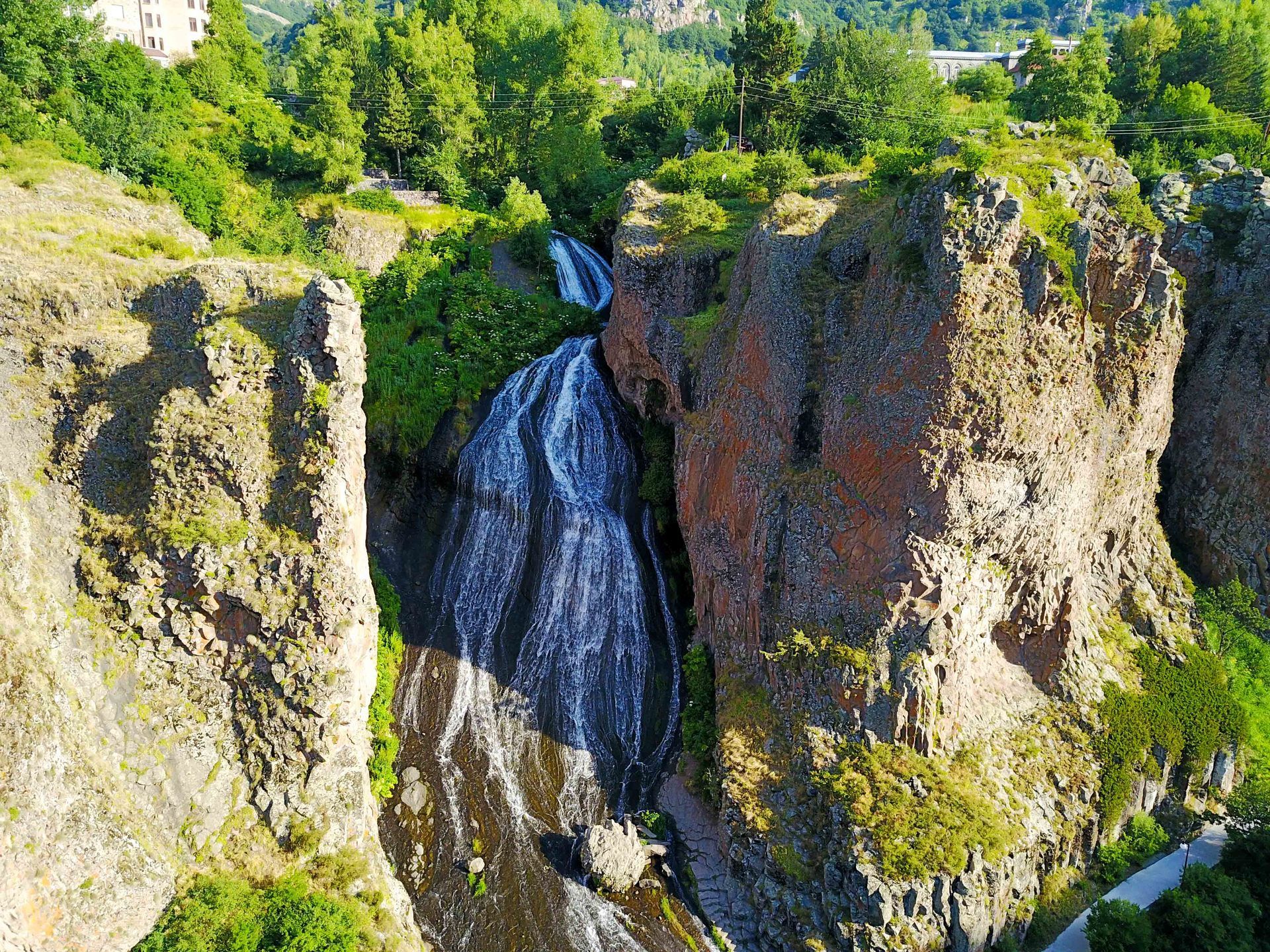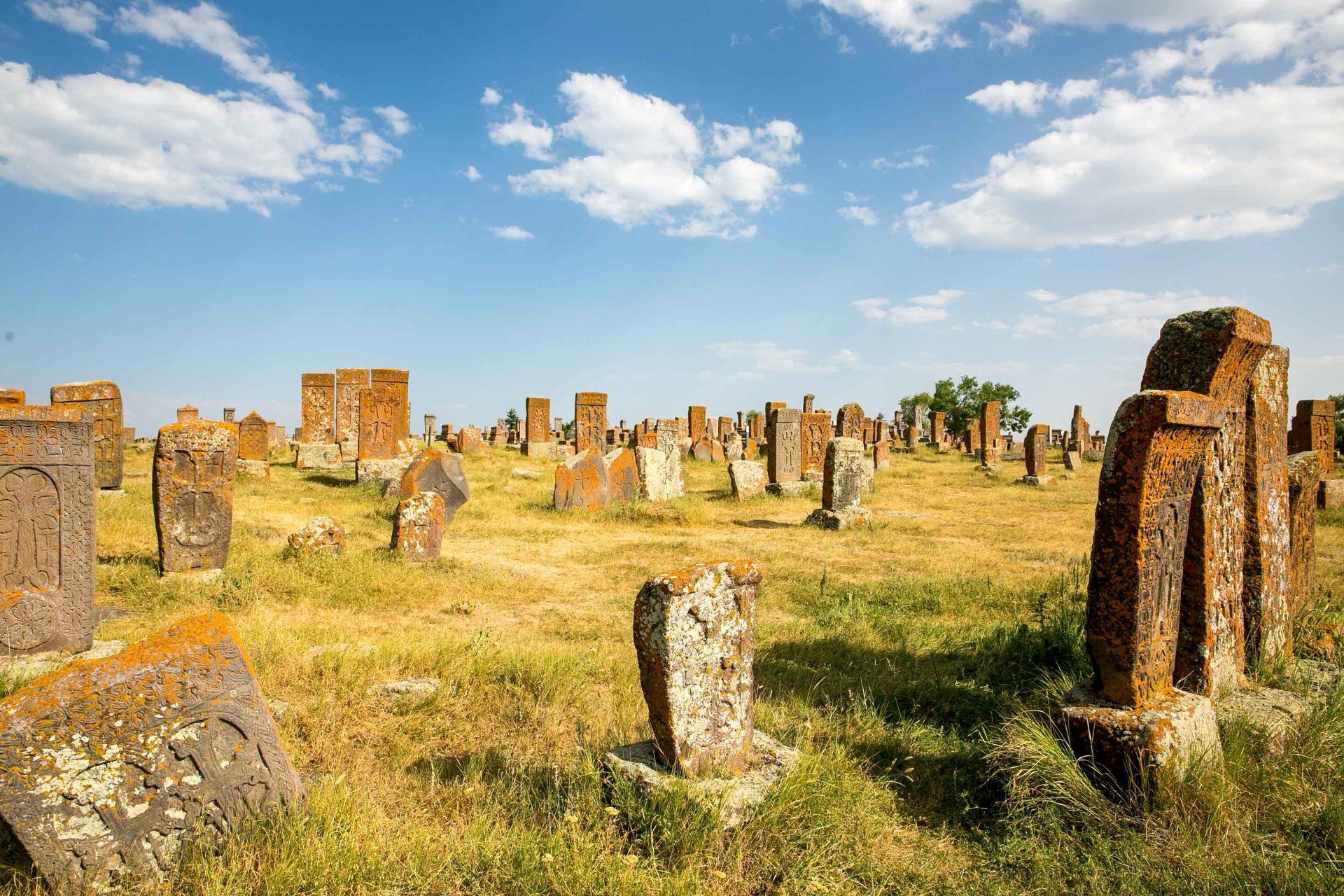Karahunj (Zorats Karar): Armenia's Stonehenge
- By Thong Do
- •
- 08 Aug, 2017
- •
One of the most mysterious places to visit in Armenia is located in the Syunik Province near the southern city of Sisian. Over 223 large stones are placed in peculiar fashion over a 3-hectar area. Karahunj gets its name from two Armenian words. Kar, meaning stone, and hunj meaning sounds end up meaning “speaking stones”. It’s sometimes referred to as Zorats Korar too and foreigners will call it Armenia’s Stonehenge. Researchers believe these heavy stones are arranged in such a way that it could be the world’s oldest astronomical observatory, and is at least 3,500 years older than the iconic British Stonehenge.
I had the good fortune of seeing this place on three separate occasions. The first time was in the winter, then at the end of spring, and just last week at the peak of summer. The first thing you notice regardless of the seasons is the high winds that sway you back and forth when you’re walking around. It’s not far from the main highway and a little dirt road will take you to the parking area. You’ll immediately see a small information/souvenir center as you step out of your vehicle. It’s filled with mostly t-shirts and jewelry and there are plenty of signs in the area with detailed facts about the history of Karahunj.
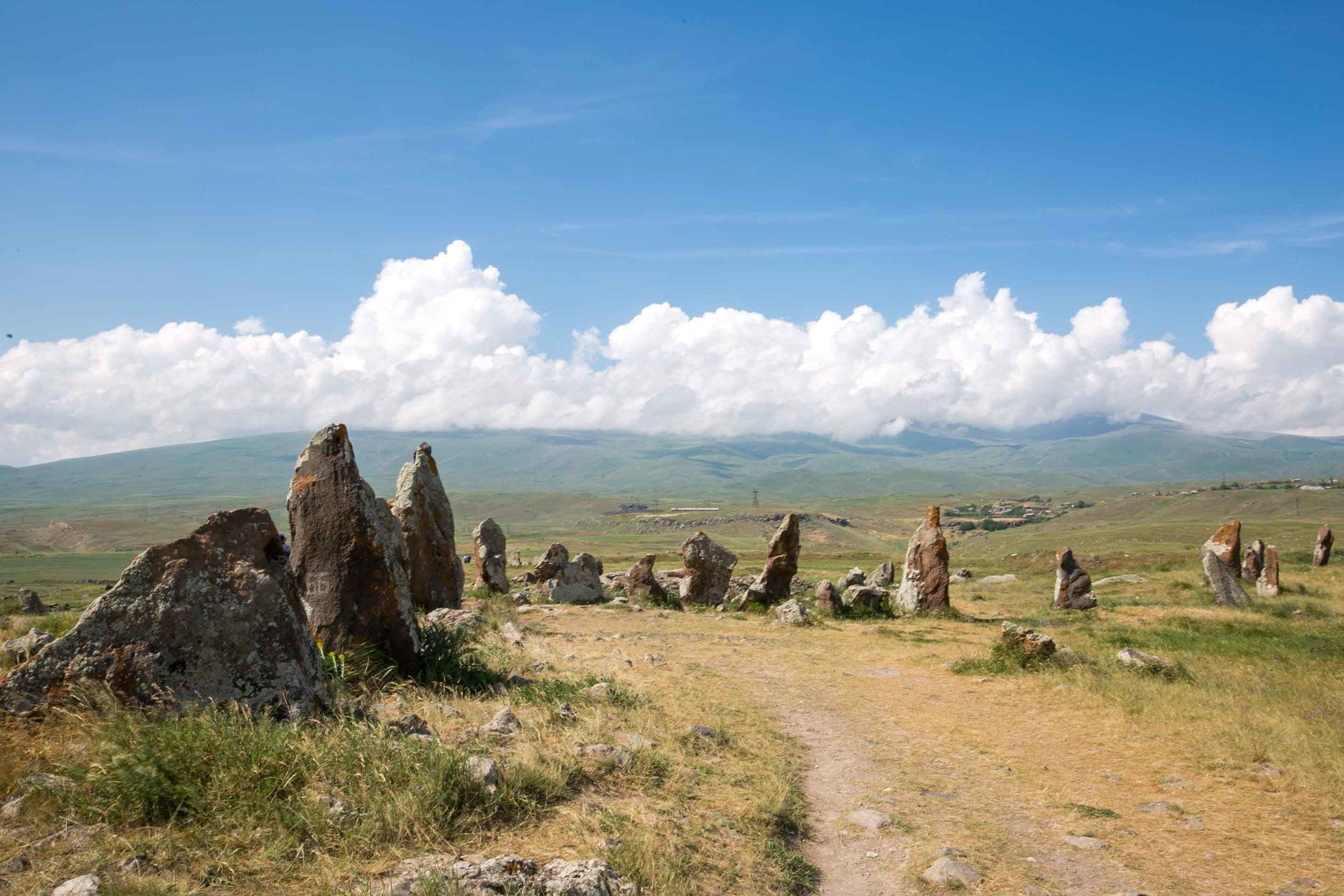
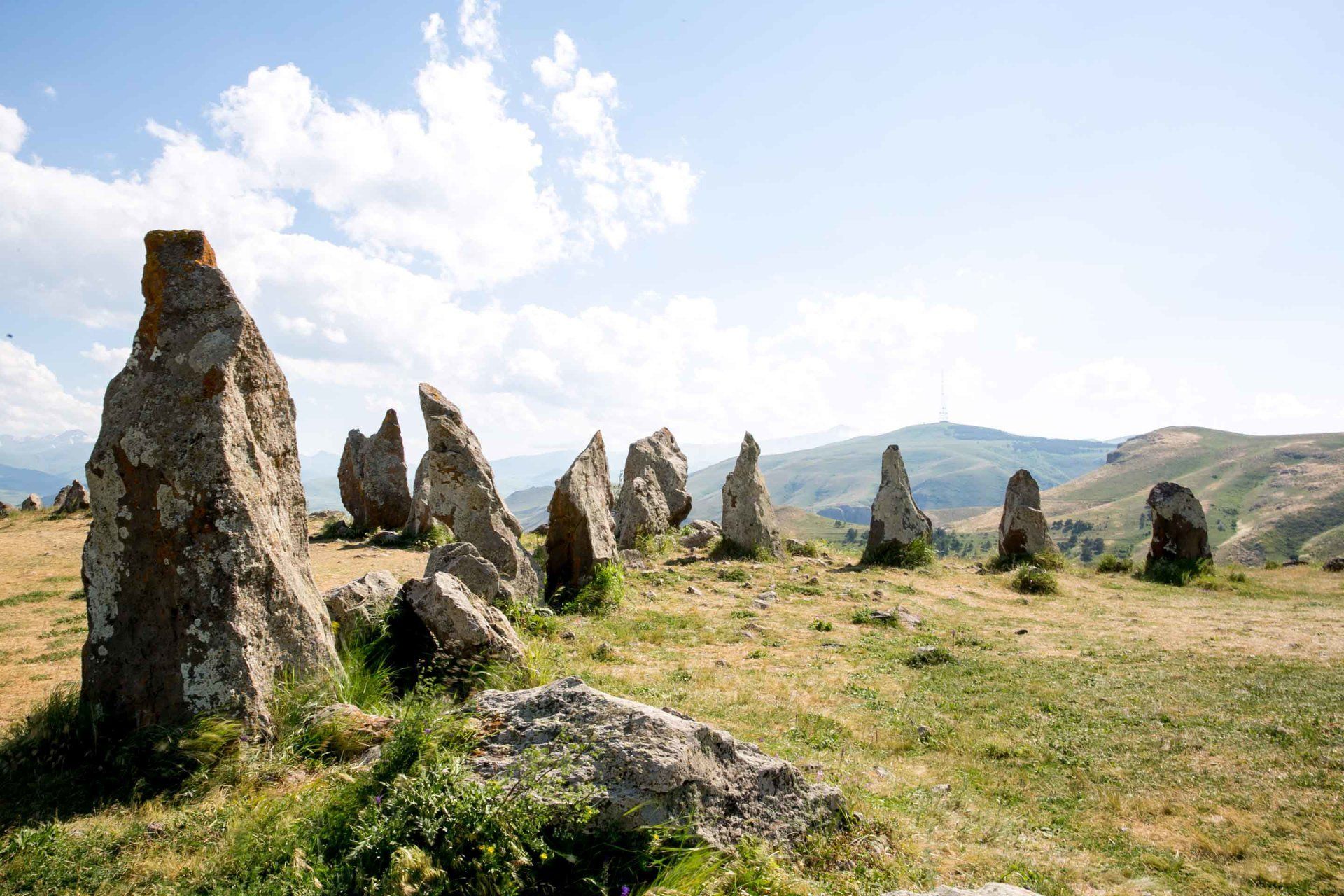
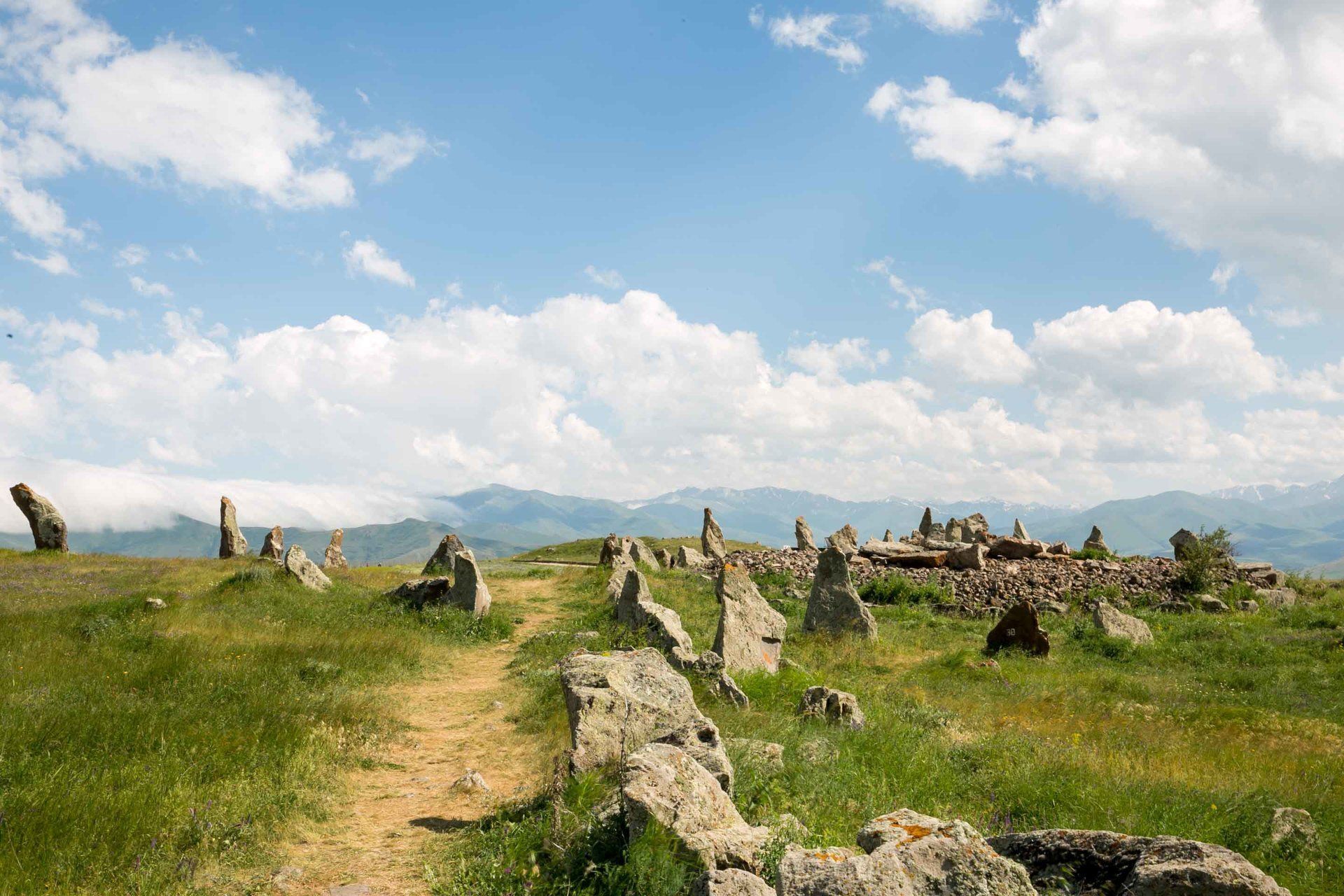
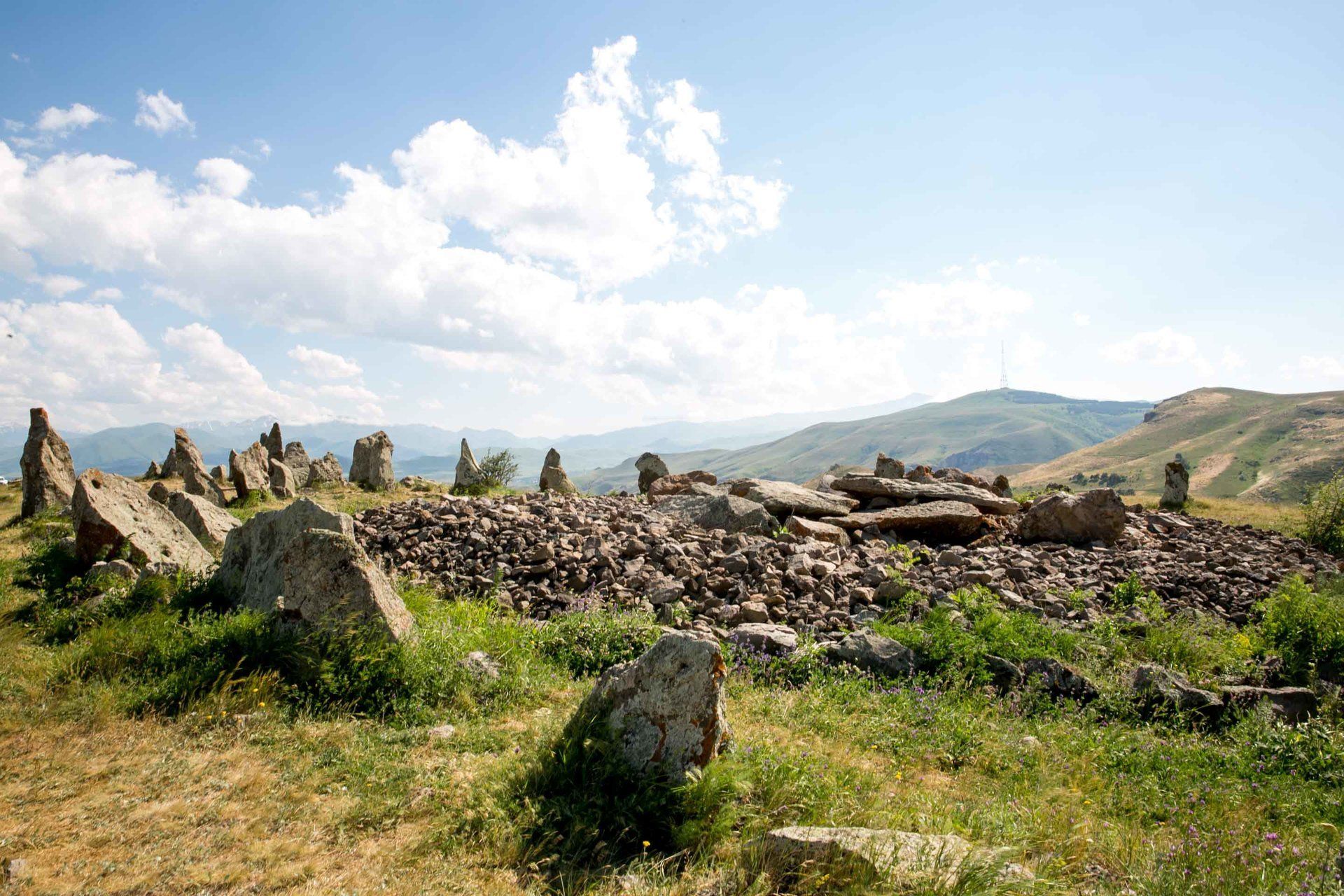
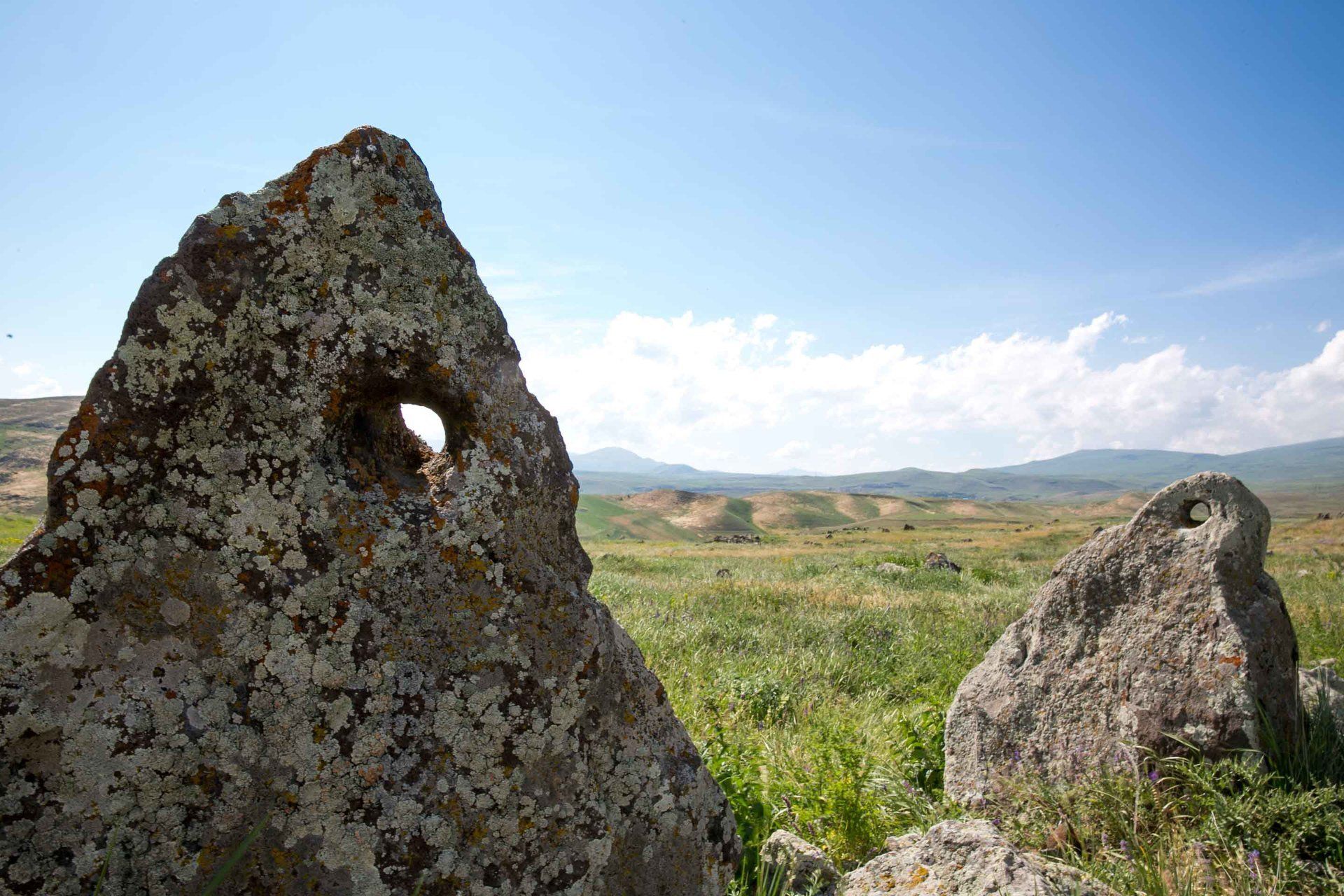
Karahunj was found in the mid 1980s by a team led by researcher Onik Khnkikyan. After a few months of analysis, Khnkikyan and his team concluded that it was an observatory. In the mid 1990s another team from the Armenian National Academy of Science and Radio Physics Research Institute counted the large number of erect stones, of which 84 were found to have perfectly cut holes in them. Keep in mind this was all done before the metal age in human history so it’s one of humanity’s great mysteries like how the great Pyramids of Giza were made, the perfect stone arrangements in Cuzco, Peru, and how the great moai statues in Easter Island were moved. Eventually, the researchers concluded that several stones were used to make observations of the sun, moon, and stars.
As you leave the parking/tourist center area you immediately see a long line of erected stones. There’s a scenic view of the mountains that will accompany you along the walk. The stones with the holes are randomly placed but for the most part it are about as wide as a soda pop can. Some of the holes are in better shape than the others and you can see and feel how smooth it was cut. Eventually you arrive at the center of Karahunj and you know it because the line becomes a large circle. In the center of this large circle is a decent sized pit that you can walk up to. The researchers also concluded that aside from Karahunj having scientific significance here there was also ritual significance here. The pit that was just mentioned was discovered to have many animal bones in there so it was a place where many animal sacrifices took place.
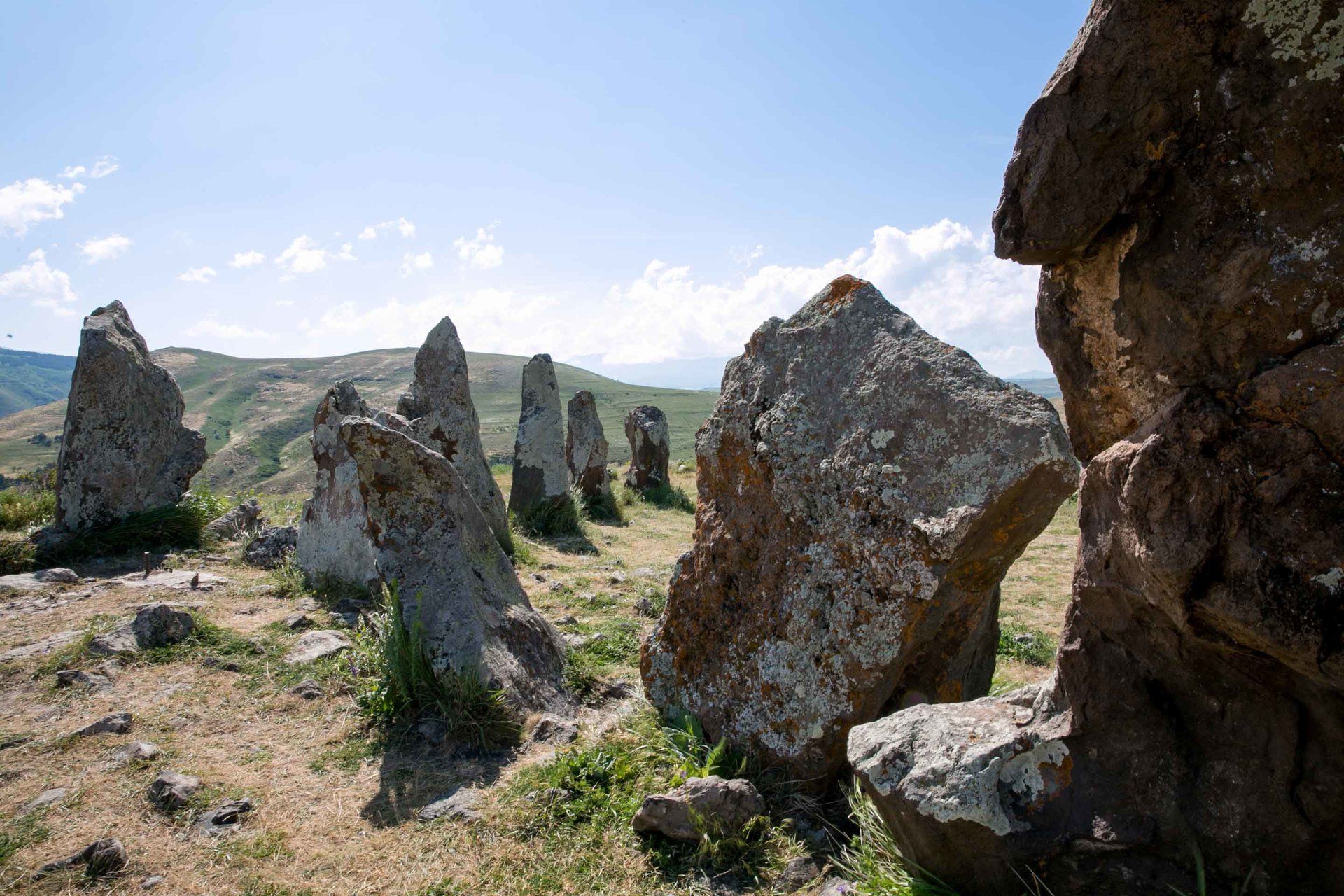
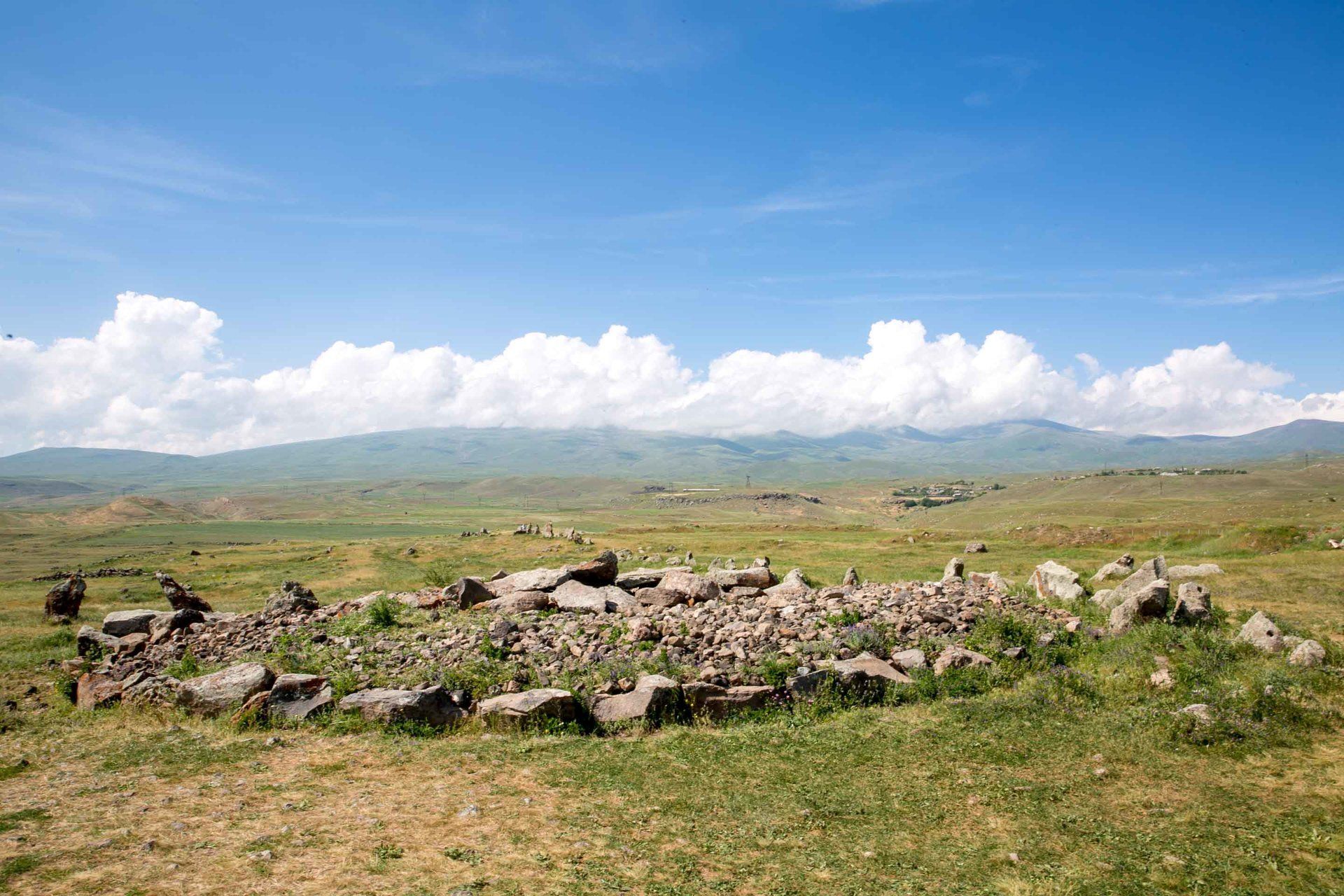
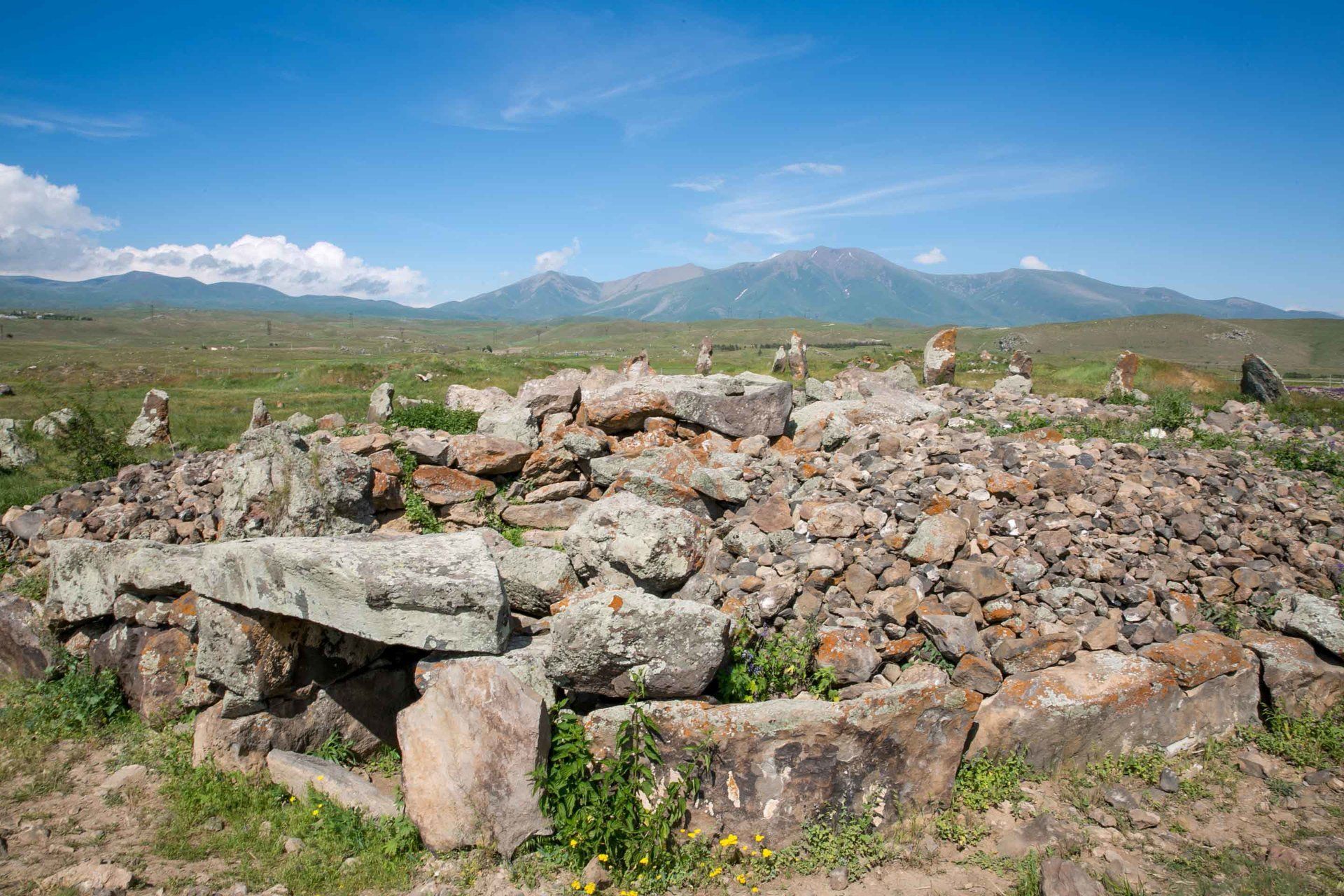
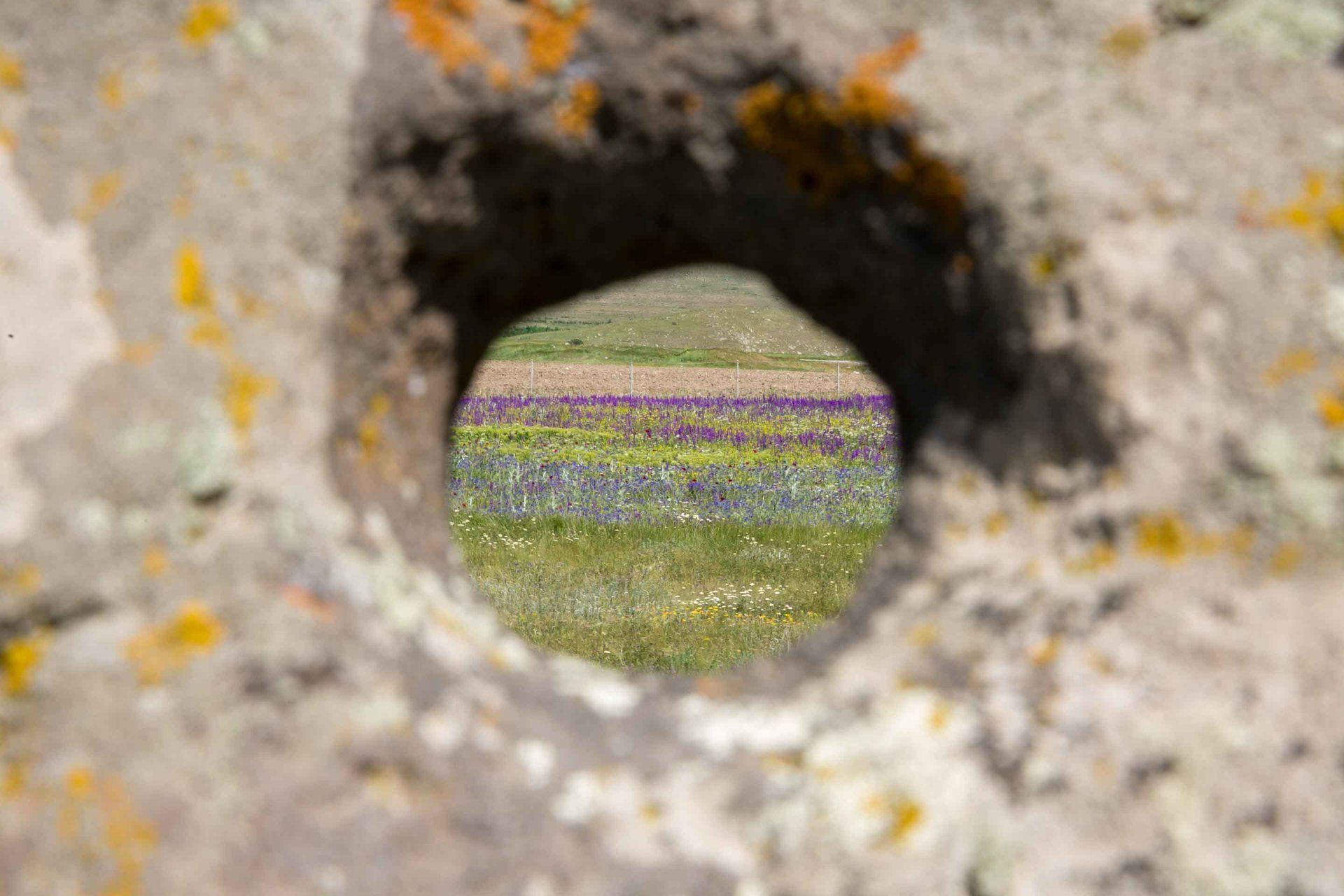
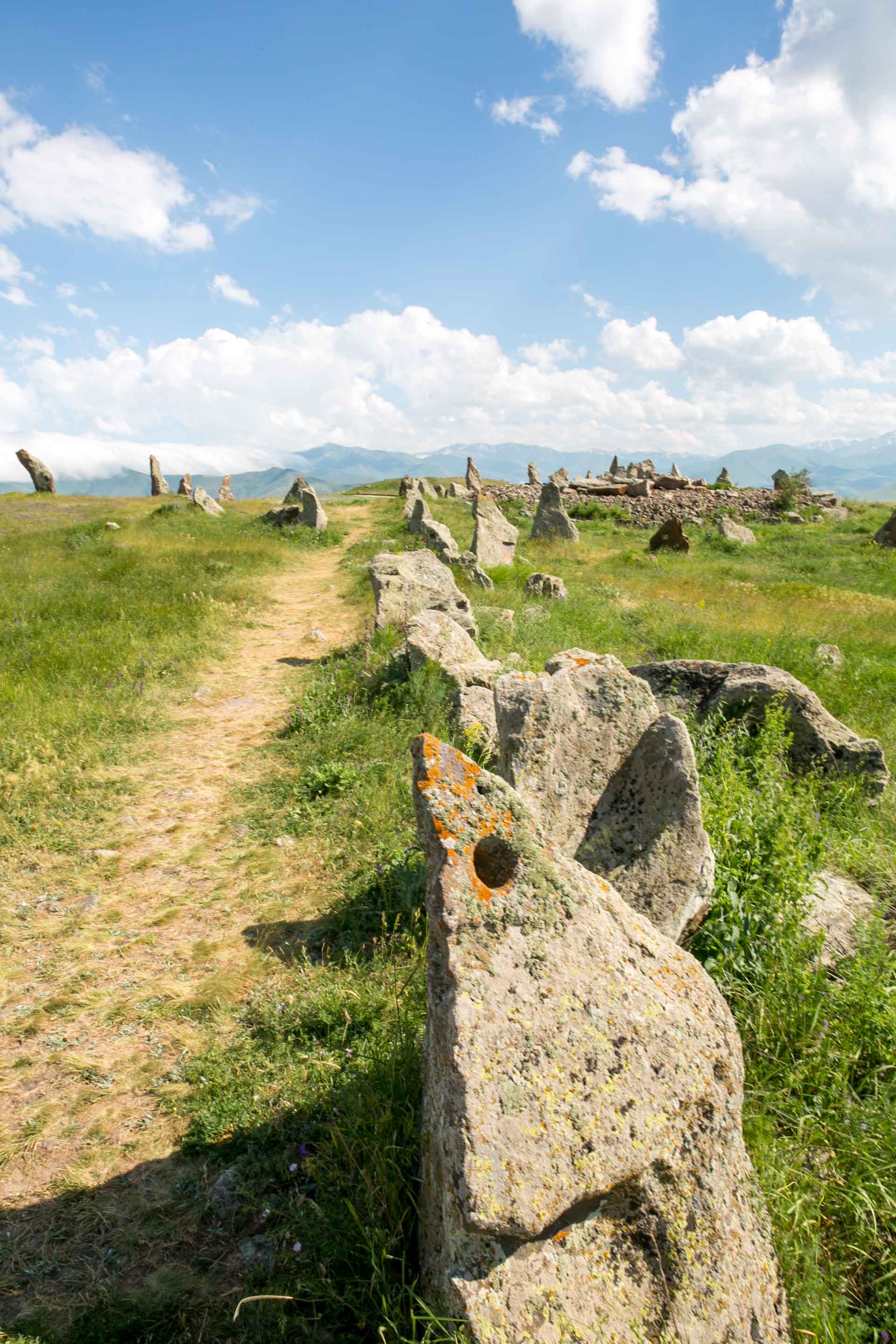
The stones are basalt and most will have a thin layer of moss on it. The stones are not gigantic and tall like Stonehenge in England but range from 0.5-3.0 meters and weigh up to 10 tons. Most of the researchers concluded that Karahunj is at least 7,500 years old. Artificats discovered on site are held at a humble nearby museum. Among them are stones with petroglyps and grave goods from Bronze Age cist burials.
If you’re heading down to the south of Armenia definitely check out this area. It’s near Shaki Waterfall, Vorotnavank Monastery, and Mt. Ughtasar where there are a large concentration of petroglyphs. It should only take less than an hour to walk around and admire the large stones and beautiful scenery. As you enter the Karahunj area you’ll also see about a dozen or so large rocks like the ones in Karahunj on the other side of the road. A local resident recently built those and don’t get that confused since some people mistake that. A nice pair of walking shoes is all you need and if you got a wide lens camera then bring it for this.
Happy traveling.

